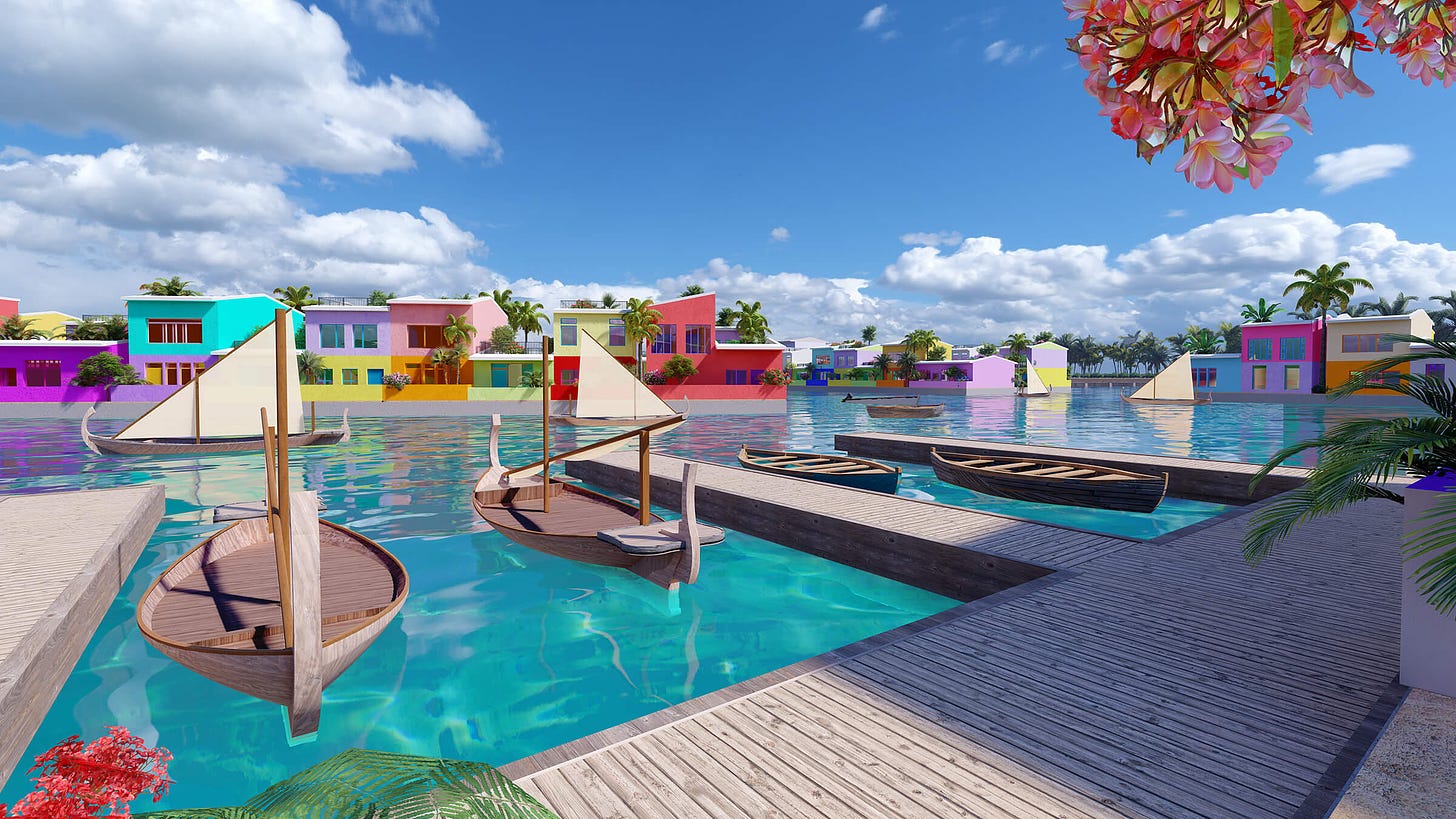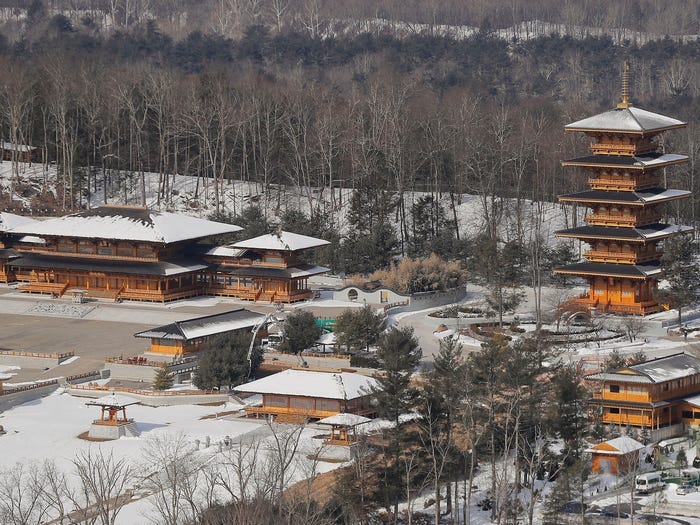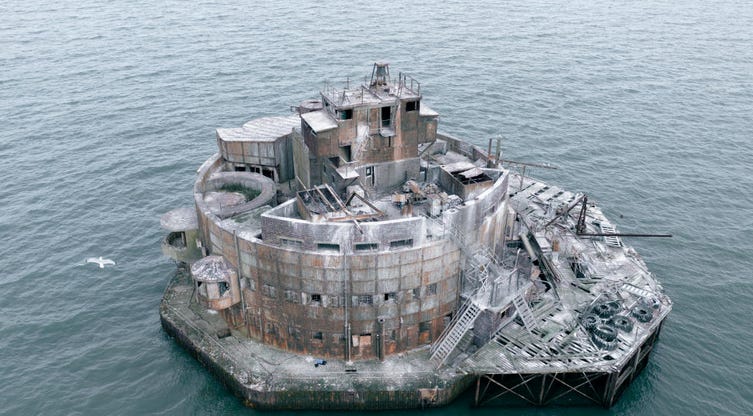Model City Monday 8/1/22
Neom Neom Neom
Suppose you are an oil-rich country. You drill the oil and get very rich, for now. But someday you will run out of oil, or the world will switch to green sustainable energy, and then you will stop being very rich. Seems bad.
There are two main classes of solution to this problem. Norway’s solution is to invest the oil money into a sovereign wealth fund; after they run out of oil, they can stay rich off investment income. Dubai’s solution is to use the oil money to build a really impressive city, then hope that rich people (tourists, emigres, and multinational companies seeking regional hubs) will relocate there, and then they can tax those rich people.
The Norwegian solution has a lot to recommend it. It’s a lot more certain: getting steady returns on capital is a solved problem in a way that development economics isn’t. And it scales better: there are a pretty limited number of rich people willing to move to new desert cities, and multinational companies only need one regional hub per region. Still, for a certain type of oil sheikh, building the world’s biggest everything has a certain unquantifiable charm.
Bloomberg View has a new article on the progress of Neom (h/t Marginal Revolution), Saudi Arabia’s answer to Dubai. I hesitate to include Neom in this newsletter. It’s not really a charter city, but very much a project of the Saudi government. It is in no sense utopian or libertarian; in fact, it advertises itself as a new level of surveillance in an already-totalitarian state. Most of all, it doesn’t. make. sense. This is an insane, utterly impossible project that the Saudi government is somehow barrelling full-speed-ahead on.
Take the Line:
You really want to watch this video. I had read a few other articles on Neom, thought I understood what level of craziness we were talking about here - but no, this is much, much crazier. I didn’t understand the full scale until they gave their proposed dimensions: a structure 500 meters tall, 200 meters wide, and (wait for it) 170 km long.
500 meters is about the height of One World Trade Center, the tallest building in the US. 170 km is about the east-west length of the Republic of Ireland. So the Saudis are going to build something . . . as tall as the World Trade Center . . . and . . . as long as . . . Ireland? That’s their plan? Yes, says the video, that is their plan.
Is this just some crazy attempt to build hype, like when Elon Musk says the next Tesla definitely will have full-self-driving ability? I don’t think so. Saudi Crown Prince Mohammed bin Salman is obsessed with Neom and very vain; I don’t think he would deliberately promise impossible things knowing that he will be embarrassed later when they don’t work out (and he says it will be done by 2030, so we’ll know the results relatively soon). Also, the government has earmarked $500 billion to $1 trillion for the project - around the GDP of Sweden - which sounds kind of like being serious. Also, they’ve already started on important Saudi construction preliminaries, like murdering the people who previously lived in the area. Also, they’ve already set up on-site camps for the construction workers (source):
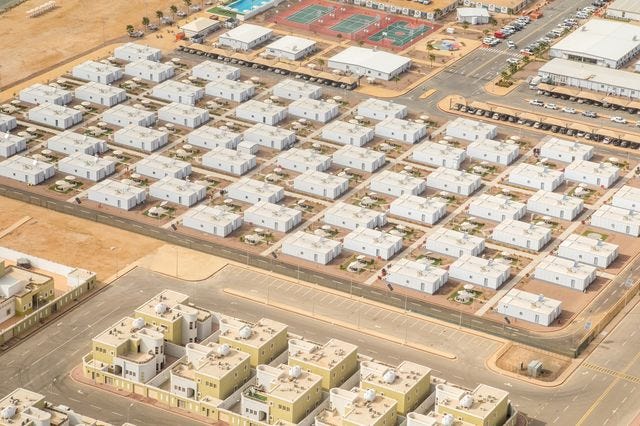 This kind of smart, walkable, mixed-used urbanism is illegal to build in most American cities.
This kind of smart, walkable, mixed-used urbanism is illegal to build in most American cities.
So what is going on? After describing Neom project leader Nadhmi Al-Nasr…
Former employees say one of the chief sources of aggravation is Al-Nasr, whom they describe as having a volcanic temper. Several recall him openly berating subordinates, sometimes issuing threats unlike anything they’d experienced in their careers. In one particularly tense moment, after two e-sports companies canceled partnerships with Neom, citing human-rights concerns, Al-Nasr said he’d pull out a gun and start shooting if he wasn’t told who was to blame, according to two witnesses to the exchange. Al-Nasr disputes these accounts. “Not anyone can stand the pressure of the demands of the day, and there are people who leave because it’s more demanding than anything they have done before,” he says.
…the Bloomberg article offers some tantalizing clues:
Among the misdeeds most likely to anger Al-Nasr, the former employees say, was failing to spend enough money. Three of them described Al-Nasr keeping a diagram showing which department heads were disbursing less than their budgets allowed, which the ex-staff half-seriously referred to as a “wall of shame.”
Maybe if you demand grander and grander plans, and have a reputation for killing anyone who opposes you, then eventually you get a really grand plan and nobody has the guts to tell you that it’s impossible.
But the problem isn’t just that Neom is too big. Everything about it is doomed. There are reasons most cities aren’t designed as 200 meter wide, 170 km long lines; this maximizes the distance between any two points! The Saudis say they will solve this with a high-speed train, but all public transit is inherently limited in speed by the need to stop at a bunch of stations along the way. The video says that you’ll be able to go from one end of Neom to the other in 20 minutes, which suggests a 500 km/hour or 300 mile/hour train line. There are some maglevs which are almost that fast, but this only works if everyone is going nonstop from the exact westernmost point in Neom to the exact easternmost point. If you want people to only have to walk a kilometer or so to their destination, you’ll need 85 stops along the way. You can do slightly better than this with a combination of express and local trains, but you’re never going to compensate for the fact that laying your city out in a line is shooting yourself in the foot.
I think maybe this is what happens to your brain when you read too many YIMBY blogs. “The only things people want out of cities are super high density and a ban on cars, right?” Dude, you are Saudi Arabia. The only two things in your country are open space and fuel. Log off Twitter, touch grass, etc.
 Okay, now I’m even more confused. The only advantage of having your city in a giant line is that at least it’s good for mass transit, and you are … emphasizing walkability? Also, aren’t you in Saudi Arabia? Isn’t it 130 degrees at all times?
Okay, now I’m even more confused. The only advantage of having your city in a giant line is that at least it’s good for mass transit, and you are … emphasizing walkability? Also, aren’t you in Saudi Arabia? Isn’t it 130 degrees at all times?
But The Line is only the beginning. They will also have a Giant Floating Octagon Of Clean Industry:
 Source: Neom website
Source: Neom website
…the world’s largest ski and watersports resort, and yes we are still in Saudi Arabia, they’ll make an artificial lake and use artificial snow:
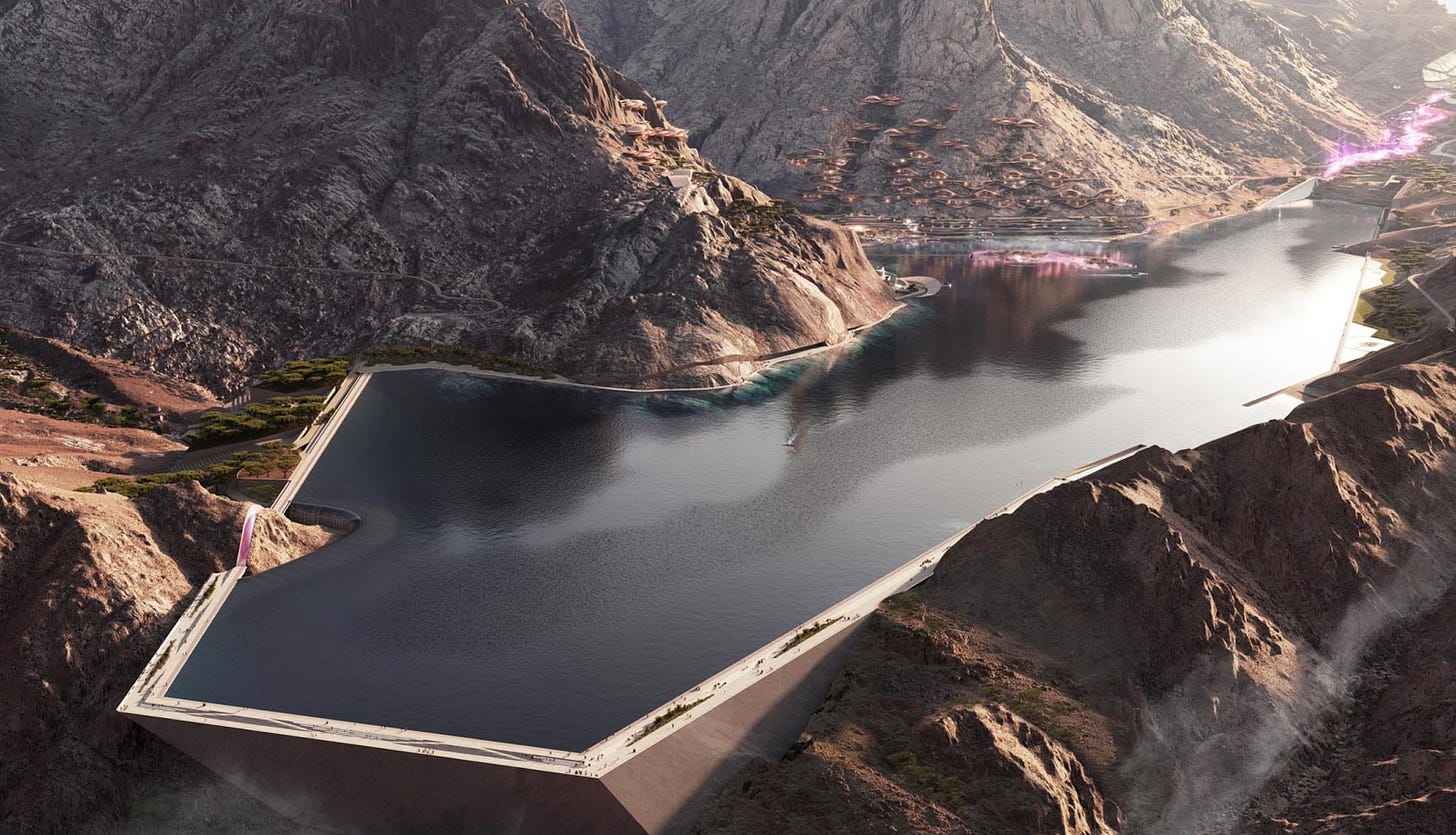 Source: Neom website
Source: Neom website
…and whatever this is supposed to be:
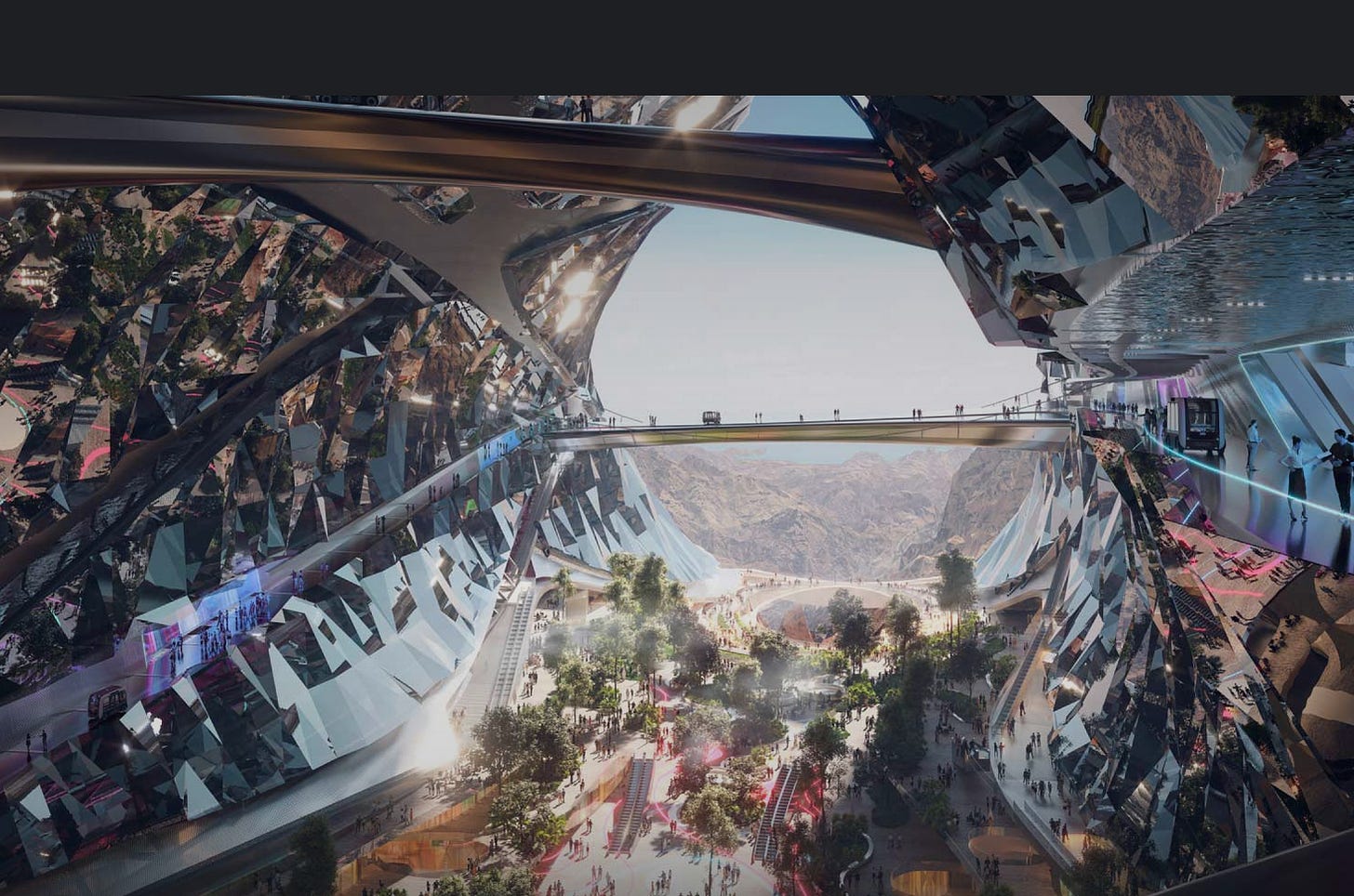 Source: Neom website
Source: Neom website
Fine! Let’s just have random stuff! Canal-pools along every street so you can swim to work! A beach made of crushed marble which will shine like silver! Whatever!
If this were some billionaire’s passion project, I’d be fine with it. It would be fun to watch exactly how it failed; it would probably leave some cool ruins. Maybe after the hype died down they could try for something smaller, and it would still be pretty impressive. At least it would beat yet another megayacht.
But in fact, this is the Crown Prince of Saudi Arabia, squandering public money. Not just renewable tax receipts, but the country’s accumulated oil windfall, just as the world tries to transition to renewable energy and the country risks never getting any oil windfall ever again. This is the money that should be going to the Saudi people having a future, and instead Mohammed bin Salman is spending it on playing some kind of demented desert version of SimCity, using a strategy that ten minutes playing actual SimCity could tell him was a bad idea.
Neom represents all the worst parts of model cities. Dictators robbing the public purse to build cool monuments that make them feel special. Total lack of interest in workers, previous inhabitants, future inhabitants, or anyone except the very rich. “Sustainability”, “density”, and “liveability” as buzzwords to throw at foreign media, with no broader story for how any of this will improve the lives of real people or the cause of human freedom.
I find model cities interesting and promising only insofar as I think some of them aren’t like Neom.
Catawba Digital Economic Zone
Haven’t heard much out of the crypto people recently, wonder what they’re up to:
They seem to have gotten…an Indian tribe? That wasn’t on my bingo card for 2022.
The Catawba Digital Economic Zone is the brainchild of Joseph McKinney (founder of the pro-charter-cities Startup Societies Foundation) and the Catawba Nation of Native Americans (a federally recognized tribe with a reservation in South Carolina). Indian tribes have regulatory independence from state governments, which some tribes have famously used to allow casinos in their territory. The Catawba are going one step further: they claim to have favorable cryptocurrency regulations which make it easier to register and operate your crypto company in Catawba territory than in the rest of the US.
You can find their exact laws here, although they are long and in legalese. CoinDesk has an explainer of the crypto benefits, which seem to focus on digital asset regulations which “integrate digital assets under existing law”, including rights around disputes and loans. They also expect upcoming laws on DAOs, stablecoin, and banking.
“Native American tribes” and “cryptocurrency” were not previously two concepts I associated closely with each other. But the Catawba were already a standout for their political savvy and economic ambitions, and they seem intimately involved here; the Zone is being run by “the business branch of the Catawba Indian Nation”, the commissioners are mostly Catawba citizens and tribal elders, and there are some nice touches like financial incentives for businesses that employ Catawba citizens.
I like crypto as an insurance policy against oppressive governments, but I am not very bullish about it as an industry right now. Still, I am excited about the idea of Indian reservation charter cities - either in cooperation with outsiders like McKinney, or - who knows? - as grassroots designs from the tribes themselves. Reservation charter cities wouldn’t be the biggest deal. Tribes have substantial independence from state and local governments, but not much independence from the national government, and a lot of the dysfunction that needs escaping is at the federal level. Still, there are probably some niche opportunities; see eg Squamish tribe building skyscrapers on their land in Vancouver despite NIMBY opposition for one example of where this sort of idea could go.
Seasteading In Paradise
Malé is the capital of the Maldives, a tiny island nation in the Indian Ocean. It looks like this:
| [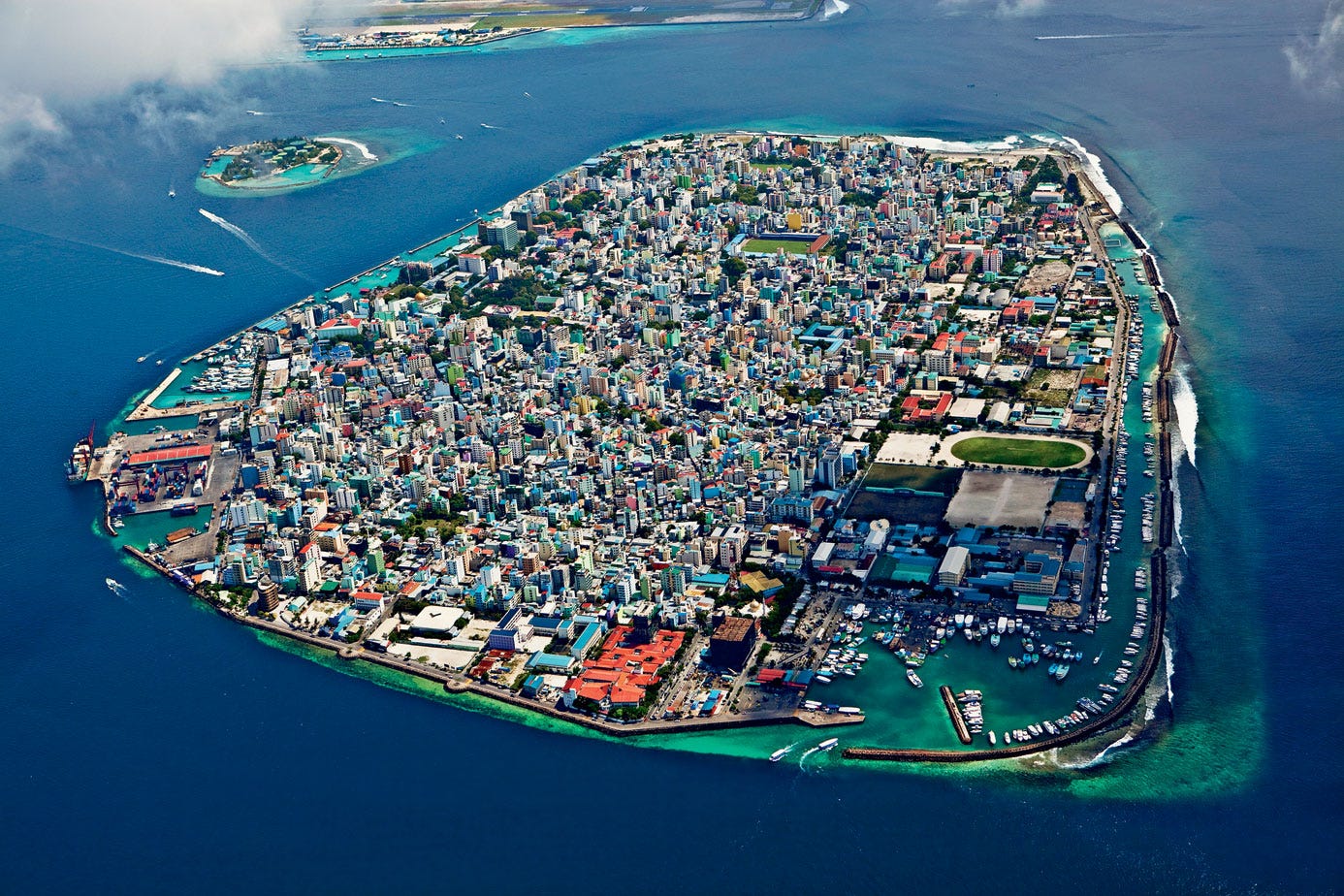](https://substackcdn.com/image/fetch/f_auto,q_auto:good,fl_progressive:steep/https%3A%2F%2Fbucketeer-e05bbc84-baa3-437e-9518-adb32be77984.s3.amazonaws.com%2Fpublic%2Fimages%2F6b977d54-218e-4a02-8ffe-630a48099ec2_1386x924.jpeg) |
One noticeable feature of Malé is its lack of lebensraum. Maldives is a pretty well-off country with a strong tourist industry, and lots more people would like to be nearby. What to do?
You can already guess the proposed solution of Maldives Floating City. They want a 20,000 person seastead docked ten minutes away from the 130,000 person island-capital. The Floating City will serve both tourists and local Maldivians (some of whom are getting nervous about rising sea levels, and would probably appreciate a development guaranteed to stay above water).
According to the organization’s press release, the Dutch corporate sponsor has obtained full permission to build the seastead, some test construction has already started, and full construction will begin in January. They hope to finish by 2027.
Here are the inevitable pretty pictures:
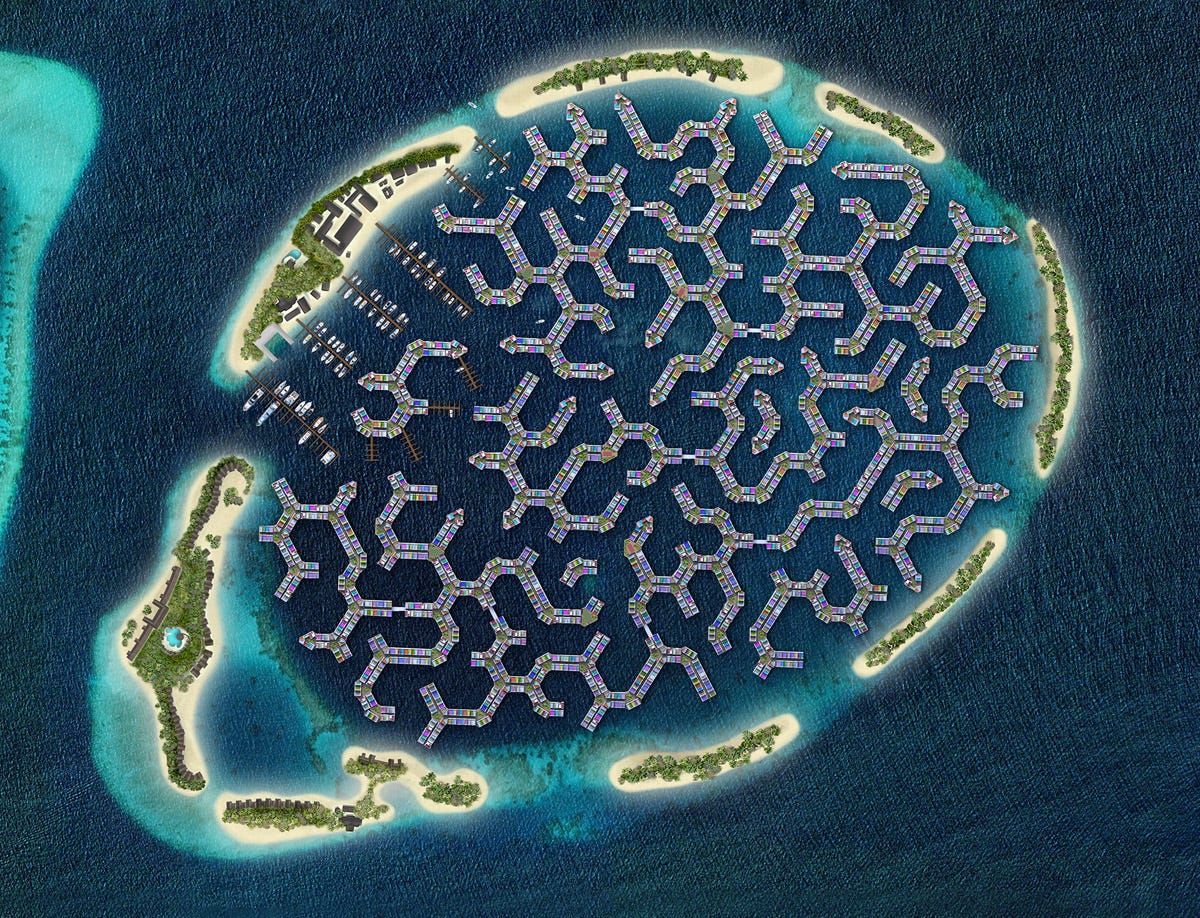 The layout is supposedly based on brain coral, but is this really the best way to lay design a seastead? Does this pattern really maximize the ease of getting from Point A to Point B?
The layout is supposedly based on brain coral, but is this really the best way to lay design a seastead? Does this pattern really maximize the ease of getting from Point A to Point B?
If you like tropical paradises and are incredibly optimistic, you can buy a house in the Floating City here, prices seem to be $150-250K.
This is not the long-awaited dream of the libertarian seastead; the whole city will be firmly anchored in Maldives, both physically and legally. But if it works, it’s a proof of concept that libertarians may be able to build on later.
Elsewhere In Model Cities
1: Prospera now hosts the drone delivery service Aerialoop, which will eventually transport cargo from their Roatan Island hub to various outposts on the mainland; you can find more information here. Their long-term plans include eventually following this up with passenger drones. And here’s some more information on the growing drone industry in Latin America.
2: Related: Prospera intern and resident George Kerpestein is writing a Substack about his experiences there. And here is the Prospera newsletter.
3: Thanks to commenters last month for pointing out that Chinese cult Falun Gong has its own compound/city in upstate New York. You can read more about it here:
4:Sealand is an independent nation (according to Sealand) based out of an old WWII sea fort in international waters. It is not for sale, but the Bull Sandfort is, for only £50,000. Alas, this one is firmly within British territorial waters. But it does look pretty defensible…anyway, see the listing here.
Predictions
-
In 2030, there are at least 50,000 people in whatever the Neom project has evolved into by then: 75%
-
Saudi Arabia builds a structure at least 100m x 100m x 1000m before 2040 or the Singularity, whichever comes first: <1%
-
In 2030, the Trojena Ski Resort exists, an ordinary (rich) person can book a room and go skiing there, and it is at least close to as impressive as the pictures (my subjective judgment; doesn’t have to be exactly the same design): 5%
-
In 2030, Maldives Floating City is home to at least 2,000 people: 20%

